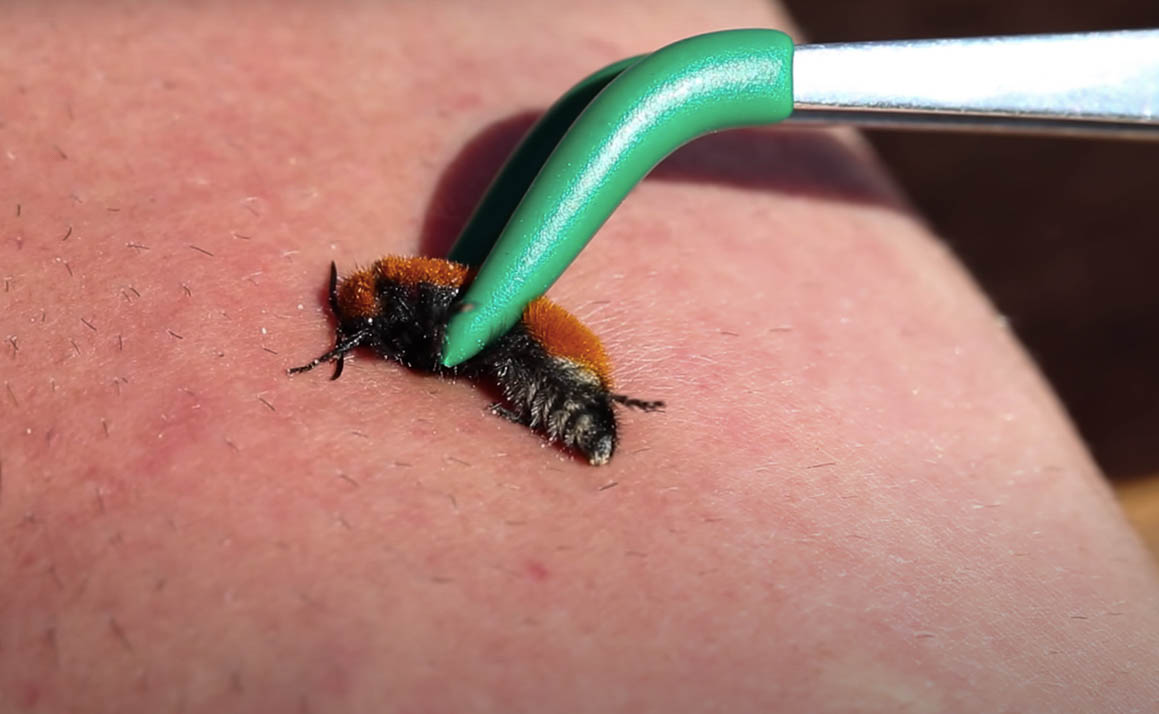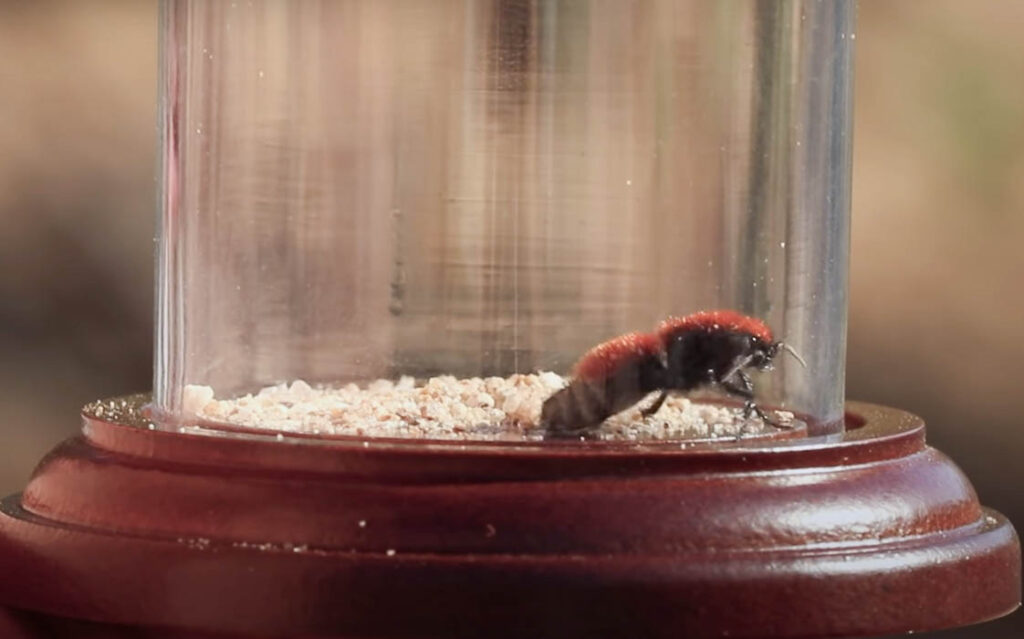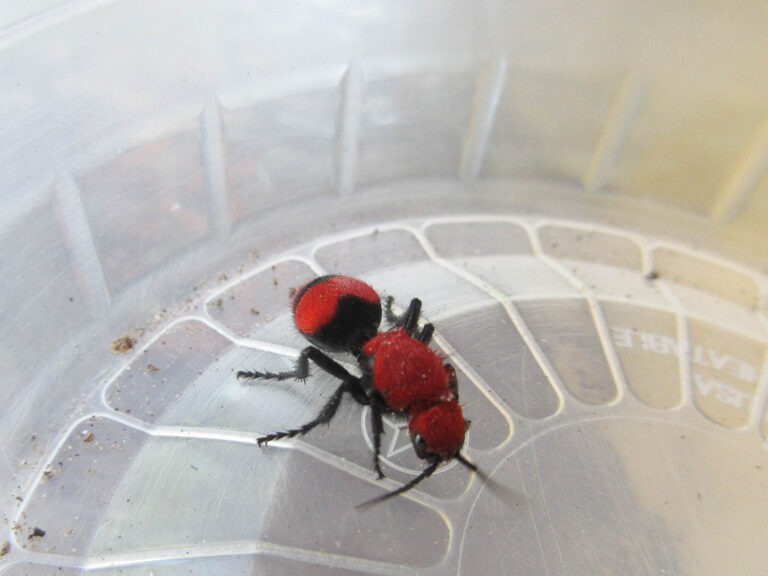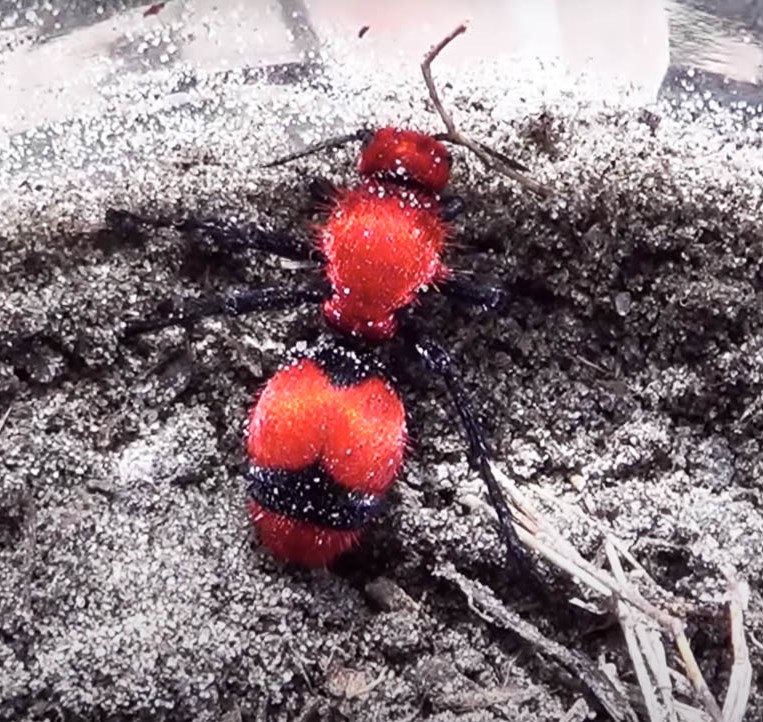A Guide on Velvet Ant Stings
A Guide on Velvet Ant Stings
There is a rule in nature: the more colorful a creature is, the more dangerous. Colors aren’t there for decoration. Instead, they’re a severe warning. They say: do not touch. Well, this is as true for any other creature as it is for the velvet ant. These tiny creatures aren’t actually ants at all; they’re wasps. However, unlike most wasp species, the female can’t fly. Instead, you’ll find them wandering around the ground. But don’t get too close, the females do pack a hidden weapon. They have a large sting, that’s amongst the most painful in the animal kingdom.
On the insect pain index, it measures an impressive three out of four (though some people place it at a four). To put that in perspective, a regular bee sting is only a one. It was the ferocity of their sting that earned them the name; the cow killer.
Thankfully, the venom of the velvet ant is mostly non-toxic. So, you won’t die from it. However, in rare cases, people can suffer an allergic reaction. The symptoms of a reaction include:
- Wheezing
- Hives or rash
- Difficulty breathing or coughing
- Difficulty swallowing, feeling of pressure in the throat
- Fast heart rate
- Dizziness
- Confusion

If any of these symptoms occur, seek immediate medical help. In the worst-case scenario, a person stung could go into anaphylaxis, which is a life-threatening condition. Therefore, call an ambulance and wait. If the person has epinephrine (adrenaline) to hand in the form of an EpiPen, then you may want to use it.
Treating a velvet ant sting
Presuming you haven’t had a rare allergic reaction, treating a velvet ant sting is relatively simple. Follow these easy steps:
- Clean the wound area. The ant has still punctured your skin, so it is sensible to clean the wound and make it bleed a little to remove any bacteria potentially injected.
- Apply ice. Ice will help bring down any swelling, cooling, and calming the surrounding sting area. Unlike bee stings, there won’t be a stinger to pull out.
- Get some rest. Pain is exhausting. It sends our bodies in overdrive. Once the pain has subsided, you’ll likely feel tired. Give yourself some time to rest and relax. You’ll feel better in no time.
Preventing a velvet ant sting
They say prevention is better than cure. Well, it’s true. One of the easier things you can do to prevent a velvet ant sting is to wear shoes while you’re outside. Velvet ant stings are powerful, but they’re not strong enough to penetrate a rubber sole. You can also take steps to prevent a velvet ant from coming on your property, by consulting an exterminator.
Most of all, if you see a velvet ant, stay away. Generally speaking, they leave people alone and do not come in swarms. Therefore, if you stay away, they will too.





